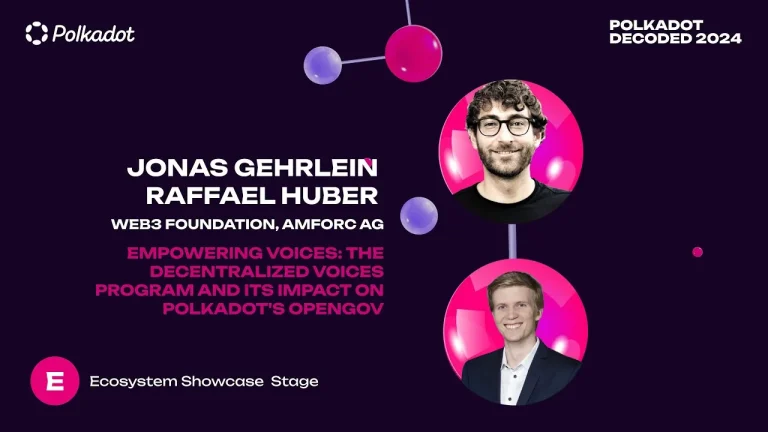Treasury management within decentralized ecosystems like Polkadot is a complex and multifaceted discipline, shaped by various theories, stakeholder interests, and governance mechanisms. As decentralized finance (DeFi) continues to evolve, the strategies for managing treasury assets are becoming increasingly important to ensure sustainable growth, innovation, and resilience of the network. This article, entirely based on this Polkadot forum post by Alice und Bob, explores the competing theories of treasury management, the values of different stakeholder groups, and the approaches that define the management and deployment of treasury resources in decentralized systems.
What is a Theory of Treasury Management?
At its core, a theory of treasury management is a framework that combines personal values, opinions, and ideologies to guide how individuals and groups interact with each other to influence the allocation and utilization of treasury assets. The primary goal of these theories is to direct behavior toward achieving outcomes that align with the values and interests of various stakeholders within the ecosystem.
However, defining what constitutes a “positive outcome” is subjective and varies depending on the stakeholder’s perspective. This diversity of views gives rise to different theories and approaches to treasury management, each with its own set of priorities and strategies.
Polkadot Stakeholder Groups and Their Values
In the Polkadot ecosystem, the treasury is not a monolithic entity with a single, universally accepted goal. Instead, it serves multiple purposes, each of which may be prioritized differently by various stakeholder groups. These stakeholders include:
- DOT Holders: Focused on the appreciation and stability of the native token, they may prefer conservative spending to maintain or increase the token’s value.
- Stakers: Interested in rewards and returns, they might support strategies that enhance staking mechanisms and incentivize participation.
- Protocols and Parachains: Developers and operators of protocols or parachains may advocate for treasury spending on infrastructure, development grants, or liquidity incentives.
- Investors: Typically prioritize returns on investment and may favor strategies that support growth and innovation within the ecosystem.
- Users: End users of the network who might value enhancements in user experience, security, and functionality.
- Network Service Providers: Entities providing essential services such as validators and oracles, who may seek funding to ensure the continued operation and reliability of the network.
- OpenGov Workers: Participants in the governance process who focus on transparency, accountability, and the long-term sustainability of the network.
The challenge for treasury management lies in balancing these often conflicting interests and making strategic decisions that reflect the ecosystem’s collective values. This balancing act requires trade-offs, as not all demands can be met simultaneously. Understanding the underlying values of each stakeholder group is essential for navigating these conflicts and finding resolutions that satisfy the majority.
Four Competing DAO Treasury Management Ideologies
Stakeholder values are not randomly distributed; they tend to cluster around specific ideologies that guide how the treasury should be managed. In the Polkadot ecosystem, four dominant ideologies have emerged, each representing a different approach to treasury management:
- Treasury Abolitionism
- Overview: Treasury Abolitionists advocate for the complete elimination of the treasury. They argue that the treasury is inherently prone to misuse and corruption and that it is impossible to achieve net positive outcomes through its spending. Their solution is to “burn the treasury,” thereby removing the potential for mismanagement and corruption.
- Key Values: Transparency, corruption prevention, minimal intervention.
- Treasury Conservatism
- Overview: Treasury Conservatives favor a cautious and risk-averse approach to spending. They believe that funds should only be allocated to well-developed, thoroughly vetted proposals with a high likelihood of success. This ideology often emphasizes the preservation of value within the treasury, preferring to spend resources when the native token appreciates or when proposers have proven their reliability.
- Key Values: Risk management, long-term value preservation, thorough vetting.
- Treasury Accelerationism
- Overview: Treasury Accelerationists advocate for aggressive spending to seize opportunities, even those with uncertain outcomes. They believe that proactive investment in innovative projects and technologies is essential to driving growth and overcoming market downturns. This ideology supports taking calculated risks to achieve significant upside potential, even if it means accepting a higher degree of uncertainty.
- Key Values: Innovation, growth, risk-taking.
- Treasury Hyperinflationism
- Overview: Hyperinflationism is an extreme form of accelerationism. Proponents argue that the treasury should not be constrained by the fear of depletion, as new tokens can always be minted if needed. This ideology challenges the notion of scarcity and promotes the idea that aggressive spending can be sustained indefinitely through the creation of additional tokens.
- Key Values: Abundance, continuous spending, disregard for scarcity.
These ideologies represent a spectrum of approaches, ranging from the complete abolition of the treasury to the continuous expansion of spending through token inflation. Each ideology has its own set of proponents and critics, and the tension between these competing perspectives shapes the ongoing debates within the ecosystem.
The Boundaries and Role of the Polkadot Treasury
One of the most critical questions in treasury management is defining the boundaries and role of the treasury. In decentralized ecosystems like Polkadot, the scope of the treasury is not fixed and has been evolving over time. Initially, the treasury primarily focused on funding research, development, and operational aspects of the network. However, as the ecosystem has grown, the scope of treasury proposals has expanded to include a wide range of activities, such as:
- Ecosystem Development: Funding individual protocols, providing development subsidies, and fostering collaboration between different projects.
- Market Operations: Engaging in market activities, such as providing liquidity and offering liquidity incentives.
- Legal and Regulatory Support: Setting up legal structures, such as foundations, to represent the ecosystem in various jurisdictions.
- Investments: Considering proposals for token swaps, diversification into other on-chain assets, and potentially real-world assets (RWAs).
As the scope of the treasury expands, so does its influence within the ecosystem. OpenGov, the governance mechanism overseeing treasury proposals, plays a crucial role in defining the treasury’s boundaries. However, these boundaries are not static; they are continually shaped and redefined by each new proposal that passes through the governance process.
The absence of external limitations on OpenGov suggests that the treasury’s scope could continue to grow until it encounters significant legal or business challenges. Until then, the treasury’s role will likely remain fluid, adapting to the changing needs and priorities of the ecosystem.
Bottom-Up vs. Top-Down Approaches
Another key debate in treasury management revolves around the balance between bottom-up and top-down approaches. These approaches reflect different philosophies about how the network should be organized and how decisions should be made.
- Bottom-Up Approach:
- Definition: The bottom-up approach emphasizes the role of individual actors in shaping the network through their actions and decisions. It is rooted in the idea that decentralized networks are inherently emergent, with no central authority dictating outcomes. This approach values resilience and diversity, accepting inefficiencies as the price for greater adaptability.
- Arguments for: Proponents of the bottom-up approach argue that it leads to more organic and resilient systems. They believe that the ideal network configuration cannot be planned or imposed but must emerge through competition and innovation. In a truly decentralized network, bottom-up processes are seen as the default mode of operation.
- Top-Down Approach:
- Definition: The top-down approach focuses on planning and implementing holistic strategies to maximize value and minimize inefficiencies. It involves defining the major components of the system and prescribing how they should interact to achieve desired outcomes. This approach values efficiency, coordination, and strategic alignment.
- Arguments for: Advocates of the top-down approach argue that it can deliver faster results with fewer inefficiencies. They believe that a well-planned, coordinated strategy can minimize friction and structural debt, leading to more effective use of resources and better overall outcomes.
The choice between bottom-up and top-down approaches is not necessarily binary; many believe that a combination of both can yield the best results. For example, a bottom-up approach may be more effective for fostering innovation, while a top-down approach could be better suited for scaling successful initiatives.
Reactive vs. Proactive Treasury Management
Closely related to the bottom-up vs. top-down debate is the distinction between reactive and proactive treasury management. These approaches reflect different attitudes toward how treasury activities should be conducted.
- Reactive Treasury Management:
- Definition: Reactive treasury management involves passively waiting for proposals to come in and then deciding whether to approve or reject them. This approach is characterized by a hands-off attitude, with stakeholders responding to the system’s needs as they arise.
- Implications: While reactive management allows for flexibility and responsiveness, it can also lead to inefficiencies and missed opportunities. Without proactive planning, the treasury may struggle to address long-term strategic goals.
- Proactive Treasury Management:
- Definition: Proactive treasury management involves actively participating in the planning and organization of future proposals. This approach is characterized by intentional efforts to shape the direction of the network and ensure that treasury resources are used strategically to achieve desired outcomes.
- Implications: Proactive management can lead to more coordinated and effective use of treasury assets, aligning spending with long-term goals. However, it requires more involvement and effort from stakeholders, which may not always be feasible in a decentralized environment.
In practice, most stakeholders in the Polkadot ecosystem tend to adopt a reactive approach, waiting for proposals to emerge before taking action. However, proactive ecosystem agents who actively shape the network’s development play a crucial role in driving strategic initiatives and ensuring that the treasury is used effectively.
Conclusion
Theories of treasury management within decentralized ecosystems like Polkadot are shaped by a complex interplay of ideologies, stakeholder values, and governance mechanisms. As the ecosystem continues to evolve, the debates around how to manage and deploy treasury resources will remain a central issue, influencing the network’s growth, resilience, and long-term sustainability.
- Follow the discussion at the Polkadot Forum. And follow Alice und Bob on X for more Polkadot content and insights.








